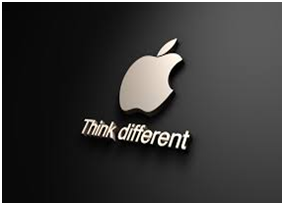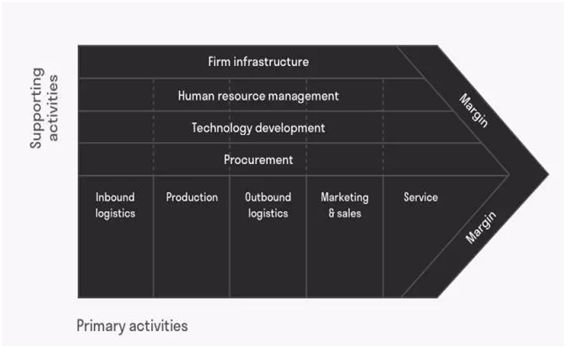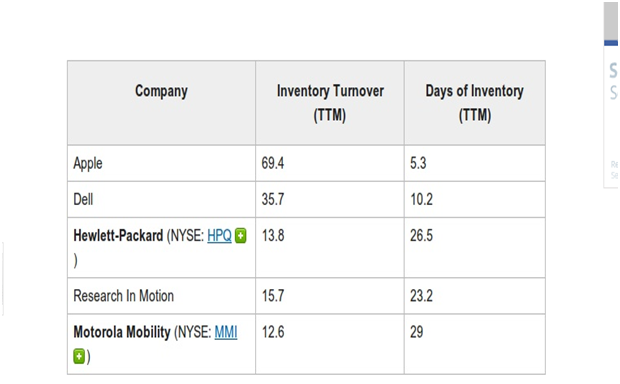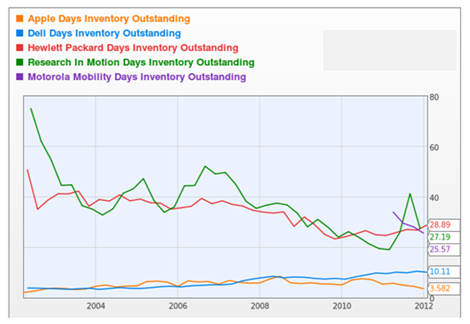Apple Supply Chain Management And Logistics
Question
Task: Write a report on analyzing the concepts of Apple supply chain management and logistics.
Answer
Introduction
Within the business manufacturing, the logistics refer to the activities, which occur in the boundaries of a specific organization and however, the Apple supply chain managementis considered to the network of the companies which world together along with coordinating tier actions for delivering the product into the market. According to Barreto, Amaral, & Pereira (2017), logistics management is an important segment of supply-chain management and supply-chain engineering processes, which aids in planning and controlling the effective, efficient forward- and reverse-flow, along with the storage of services, goods and the related information between the origin point and the consumption points, for meeting the requirement of the customers. Thus, the present study discusses the Apple supply chain management and logisticsalong with determining the primary functional areas of logistics like marketing, production, accounting, and finance that might interface. The analysis of the effectiveness of the present order cycle and inventory management is also highlighted in the study.
Company background
Apple Inc. is the American Multinational Company of Technology which was founded in the year 1977 with its headquarter in Cupertino, California, USA. This company designs, develops, and sells computer software, consumer electronics, and online services. Thus, the organization is considered to be the world’s Big Tech technology organization that includes hardware products like iPhone smartphones, iPad tablets, Mac laptops, Apple watch, and more. Moreover, the company’s supply chain is considered as the most efficient supply chain in the world for the last 3 years with building up strong relationships with its suppliers.

Figure 1: Apple Inc. logo
Source: (Apple. 2020)
The interfaces
Interface between Production and Logistics: Through appropriate logistic channels, completely assembled products, from different manufacturing units of Apple supply chain management, are made available in the market, according to the demands of the consumers. As opined by Cousins, Lawson, Petersen & Fugate (2019), the labor cost is minimal in the nations of Asia, while the availability of raw materials for the manufacturing process is high and transportation facilities are readily available, which reduces the manufacturing expenses of the company. The logistics helps Apple Inc. in maintaining a balance between the demand and supply of the products, through making the raw materials available to the manufacturing units timely while shipping the finished goods efficiently, to the storage and distribution facilities, as and when required, so that the lead time for the products in the market is less.
Interface between Marketing and Logistics: As stated by Dubey et al., (2017), two very important aspects of marketing mix, Place and Product, are directly impacted by the logistics systems, at Apple Inc. The logistics systems ensure that the product is delivered at those points where there is an increased demand for the same, while managing the inventory and stocking-up products in storehouses, to minimize the lead time, when the customers demand the products, in other markets. The marketing department, on the other hand, through market researches, helps the logistics department to gain a clear idea regarding the predicted demands of the customers in the market and thus, plays an important role in inventory management.
Interface between Accounting & finance and Logistics: Apple supply chain managementis considered to be a financially stable company where investment can be made as it has the increasing trends of earnings. The Gross profit has changed from 33.97% to 35.96% and the percentage of operating income has increased from 18.37% to 20.96%. The logistics system, through their effort to minimize the lead-time and to make the products readily available to the customers, as per their demand, according to the market trends, helps in maintaining the profitability of the company.
As viewed by Cattaruzza, Absi, Feillet, & González-Feliu (2017), according to Porter’s Value Chain model, different departments at Apple supply chain managementinterfaces with each other, to maintain a seamless supply chain and organizational operation. The inbound logistics comprises the import of raw materials used for the production process; any delays in inbound logistics adversely impact the production. The outbound logistics includes collection of finished goods and their delivery to the storehouses initially, post which, with the usage of marketing trends proposed by the marketing department of Apple Inc, the products are shipped to the markets where the demand is high. On the other hand, in markets where the demand is expected to rise, the products are stored in storehouses of Apple supply chain management, or the distribution partners, to cater to the needs of the consumers in future. The strength of this theory is its approach as it focuses on the activities and system with the customers as their central principle rather than that of the departments and the categories of accounting expenses.

Figure 2: Porter’s value chain analysis
Source: (Al-Shammari& Al-Faqir, 2017)
Order cycle
As viewed by Genovese, Acquaye, Figueroa & Koh (2017), the estimated dates of shipments in Apple Inc., as a part of the order processing systems, are based upon the lead-time that is quoted to the customer during the time of order placement. The lead-time of the order shipment is during the business days that are Monday to Friday, excluding the Federal Reserve holidays. The order processing and management process of the Apple supply chain management includes certain activities as follows:
Order Planning: Apple Inc. possesses an efficient order handling system, for the prevention of bunching, through utilization of experienced salespersons, both in field as well as over phone and website, while offering additional benefits and gifts to the regular customers.
Order transmittal: It is the series of events that occur between the time of the customer placing the order and the time in which the seller receives the order. Apple Inc. utilizes methods like the internet, POS system, EDI, and email, which are all very efficient techniques and reduces the chances of errors. However, there is a chance of data breach since the information are all shared through online interfaces, for which Apple Inc. requires installation of safety firewalls and other advanced internet security systems
Order processing: In Apple Inc., this process involves checking for the accuracy and completeness of the order through customer credit check, transaction records from the accounting department as well as records from the inventory department that locates the nearest warehouse to the customer. All these steps are digitally and automatically managed, through software, for minimal errors (Saberi, Kouhizadeh, Sarkis, & Shen, 2019). Systems for transmitting messages to the customers regarding their processing status and managing the transportation of the shipment, is also managed under this process, at Apple supply chain management.
Order picking and assembly: At Apple Inc, the software responsible for maintaining records of inventory management and order processing, notifies the warehouse in order to assemble the given order by providing the picking list, indicating items, and the order of pick to the warehouse employees. The stock-out information is to the department of order handling so the document could be adjusted and eventually the packing list gets enclosed with the order.
Order delivery: This is the last stage, where the carrier picks up the shipment till the product is delivered to the receiving dock of the customers. This system is also very efficient for Apple Inc. and the product is delivered to the customers, within the stipulated time, almost always.
According to Jabbour & Jabbour, (2016), though all the processes for order management are efficient at Apple Inc., the company requires to incorporate innovation into the existing processes every now and then, to ensure that the best services are being delivered to the customers. Collaborative planning, forecasting and replenishment (CPFR), along with enhanced network visibility are concepts related to Order management processes, that can be taken into consideration, for improvement, by Apple, in order to cope up with changes in trends of Apple supply chain management, especially in face if emergencies like the current pandemic of Covid 19. The afore-mentioned concepts and systems would allow the consumers to gain a live view of the shipping process, from the time it is dispatched for delivery, till the time of delivery, while allowing the company to maintain inventory only just as much is required, cutting off unnecessary stocking of inventory.
Inventory management
Apple Inc utilizes the most common models of inventory management that is the inventory production quantity, which has helped the company in managing the inventory of the company. The chief operating officer of the company, Tim Cook from the beginning possesses the view of reducing the inventory, cutting down the warehouse cost, making the complete among them. The CEO of the company cuts down the component supplier from 100 to 24 that forces the other companies to compete with the business of Apple. To reduce the warehouse cost it is essential to keep very little inventory. Thus, being the technology manufacturers, Apple supply chain managementdoes not keep too many products within stock due to the highly competitive nature of the technology industry. Thus, accurate forecasting of the sales and having no excess inventory is very much essential as the new products of the company cannibalizes the older products within the technology industry.

Figure 3: Inventory turnover of Apple Inc.
Source: (Small et al., 2018)
The company has 154 suppliers that enable them to have a better relationship with the suppliers along with keeping the central warehouse that has perfect sync with 250 Apple-owned stores. Thus, as observed by Volland, Fügener, Schoenfelder & Brunner (2017), has a small number of the stock keeping units that improve the forecasting accuracy and thus, the company’s long life cycle of products helps in it. The company frames demand-forecast for not only the product but also technologies that it would like in buying in the future. Hence, this allows Apple supply chain management for retaining the suppliers in long-term contracts so that the competitors are unable to obtain the latest parts and technology, thus rendering a competitive edge to Apple Inc. According to the Collaborative planning, forecasting and replenishment concept of Inventory management, maintaining low stocks of products in times of emergency like the current pandemic, might help the company to avoid facing losses. Owing to a severe blow to the economic systems of the nation’s due to Covid 19, there has been and will be significant changes in the disposable income of the populations globally, which will exert an impact on the sales of the products and demands of the customers. The CPFR concept will help in managing the inventory just right and help Apple supply chain management to avoid encountering loss in finances.

Figure 4: Apple’s Inventory Outstanding chart
Source: (Wang, Gunasekaran, Ngai & Papadopoulos, 2016)
Conclusion
The present study focuses on theApple supply chain management and logistics that helps the company to efficiently manage their operations. The study helps in determining the areas within which the logistics and the core functional areas like marketing, production, accounting, and finance which might interface with each through the theories of the logistics management. The study also incorporates the analysis of its effectiveness regarding the current order management cycle of the Apple inc with including activities like order planning, order transmittal, order processing, order picking and assembly along with the order delivery. Lastly, the study mentions the inventory management of the Apple supply chain managementalong with the help of theories related to the inventory.
References
Al-Shammari, E., & Al-Faqir, T. (2017).Analysis Support Activities Value Chain Model to the Porter and Impact on the Knowledge Department. Apple supply chain managementIraqi Administrative Sciences Journal, 1(1), 60-86.doi: 10.33013/iqasj.v1n1y2017.pp60-86
Apple. (2020). Retrieved 9 June 2020, from https://www.apple.com/
Barreto, L., Amaral, A., & Pereira, T. (2017). Industry 4.0 implications in logistics: an overview. Procedia Manufacturing, 13, 1245-1252.
Cattaruzza, D., Absi, N., Feillet, D., & González-Feliu, J. (2017). Vehicle routing problems for city logistics. EURO Journal on Transportation and Logistics, 6(1), 51-79.
Cousins, P. D., Lawson, B., Petersen, K. J., & Fugate, B. (2019).Investigating green supply chain management practices and performance. International Journal of Operations & Production Management.
Dubey, R., Gunasekaran, A., Papadopoulos, T., Childe, S. J., Shibin, K. T., &Wamba, S. F. (2017). Sustainable supply chain management: framework and further research directions. Journal of Cleaner Production, 142, 1119-1130.
Genovese, A., Acquaye, A. A., Figueroa, A., &Koh, S. L. (2017). Sustainable supply chain management and the transition towards a circular economy: Evidence and some applications. Omega, 66, 344-357.
Jabbour, C. J. C., & de Sousa Jabbour, A. B. L. (2016). Green human resource management and green supply chain management: Linking two emerging agendas. Apple supply chain managementJournal of Cleaner Production, 112, 1824-1833.
Saberi, S., Kouhizadeh, M., Sarkis, J., &Shen, L. (2019).Blockchain technology and its relationships to sustainable supply chain management. International Journal of Production Research, 57(7), 2117-2135.
Small, G. L., Van Oss, J. F., Regenor, J. A., Guerrier, P. K., Baggs, G., & Jones, J. C. (2018). U.S. Patent Application No. 15/848,926.
Volland, J., Fügener, A., Schoenfelder, J., & Brunner, J. O. (2017). Material logistics in hospitals: a literature review. Omega, 69, 82-101.
Wang, G., Gunasekaran, A., Ngai, E. W., & Papadopoulos, T. (2016). Big data analytics in logistics and supply chain management: Certain investigations for research and applications. Apple supply chain managementInternational Journal of Production Economics, 176, 98-110.












